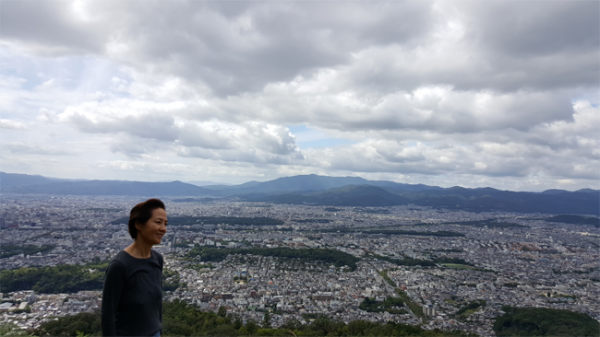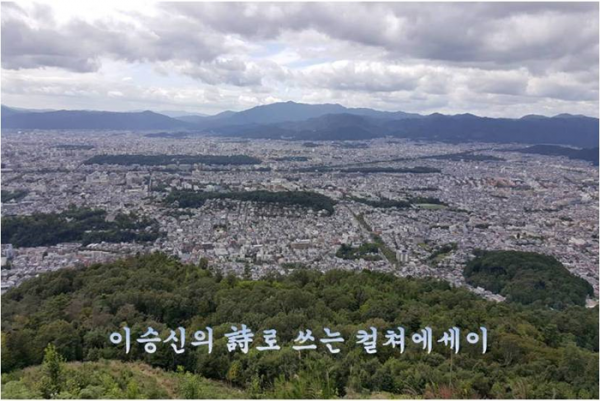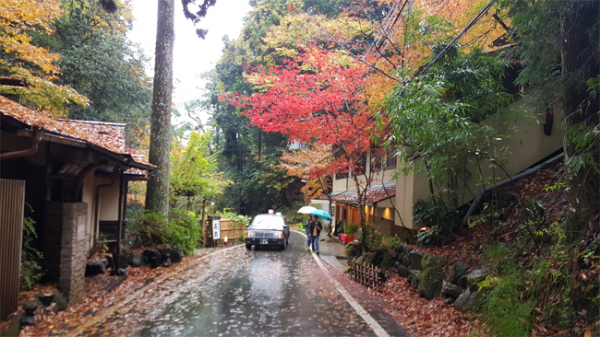Kyoto Correspondence 2
It is my first autumn during my long-term stay in Kyoto. In Kyoto, located in more southern latitudes than Busan, it is twenty-one degrees Celsius at the moment and the autumn leaves have just started to turn red and yellow. The autumn flavor is, however, pervading everywhere. If it is like last year, all those maple tree leaves I have seen during the summer would not turn into red stars until the end of November. The thought of it makes my heart flutter, although I am just overwhelmed by my eight-month-long strenuous life of study in a foreign country.
It is because the autumn leaves in Kyoto have their own unique beauty, incomparable to any other autumn leaves in the rest of the world such as those in upstate New York, in New England, in Main state, as well as in Canada I have seen for several years. The maple tree leaves are in the shape of a star the size of a thumbnail. It is fantastic to see all those numberless leaves spreading out against the blue sky. There are some hundreds-year-old maple trees in the gardens of more than two thousand temples in this city. They are about to be dyed with red leaves.
There are some temples with mountains in the background, although located in the middle of the city. Each maple tree against the evergreen trees in those mountains is genuinely beautiful. It is quite strange that those trees in the mountains seem to have been manicured, when they must be in a natural state. Floodlights in the evening, which has already started, serve as a special kind of art, supporting the natural beauty and creating different impressions.
There was no available hotel room during the cherry-blossom season in spring as well, but all the rooms have already been booked out, from months ahead, for this autumn-leaf season. It is probably because of the growing number of Chinese tourists.
Many westerners visit this place. Kyoto seems to be their city of romance. Old and young western couples are walking hand in hand with faces nothing but fascinated by everything in Kyoto. There are few people who come to Seoul just for tourism, and their facial expressions are different from those one would come across in Kyoto. Some of them even told me, misunderstanding that I am a Japanese, that they feel like they were dreaming.
It is the same for Chinese as well. I can see even a little rough Chinese people bow their heads and become gentle, influenced by the atmosphere here where everybody is quiet, polite, being considerate of others' feelings, and repeatedly saying "Arigato" and "Sumimasen".
According to a recent article by an expert, Chinese people feel like they are being treated politely and specially in Japan. I understand what they mean.
Japanese are quiet and very modest, however, if you observe more carefully, they have great pride in their city, Kyoto.
The citizens of the world who have been here would go back and recommend their friends and family to visit Kyoto, talking about their unforgettable memories. It is a world trend to invest in one's life experience rather than in one's possessions. They deserve this fortune since they have not ruined or discarded their precious inheritance from their ancestors with a thousand-year-long history, but maintain them with great care and continue their tradition.
I have always been trying to figure out how they, not just some parts of them but all of them, have earned the trust of the world with their kindness, honesty, and politeness. The answer is, as might be expected, education, the one started even before they were born.
It is only regrettable that such Japanese people with the world's trust and respect cannot continue to constitute a more powerful country because their representative political leadership does not perform in a deeper and larger scale.
Trees turning red and yellow in Kibune 貴船 about a twenty-minute-ride from Kyoto - Nov 8 2015, Kibune  A city view from the top of the Mt. Daimonji 大文字- October 31, 2015
|







